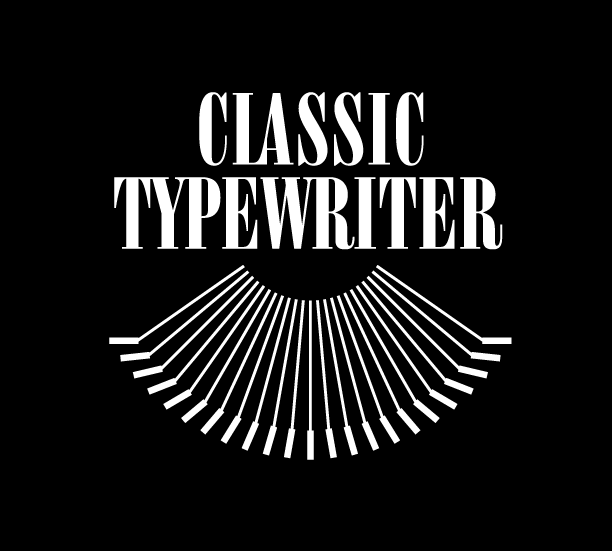Little fingers, big soul.
Enter the Hermes Baby, arguably one of the most beautiful typewriters ever designed.
This beauty wound up in the hands of well-known poet, Tyler Knott Gregson. See his work on Instagram @tylerknott
More than that, it’s a practical, portable machine still in use today all over the world.
The legendary design carried through almost unchanged from the 30’s (in the Hermes Featherweight) to the 1970’s, undergoing minor revisions along the way. They keys, for instance, went from round to more square (just like on most other models). Eventually, models picked up a two-tone ribbon selector.
You’ll find the “Baby” and the “Rocket” branded on many machines, all of exquisite quality. I’ve even had a beautiful one branded ‘Montana’, made in Italy. They came in a variety of finishes, from gray crinkle paint to smooth gray or the iconic 50’s green (made famous on the Hermes 3000). Along with the Swiss version, Baby’s were made under various model names in Britain, Germany, Poland, France, Italy and Brazil.
The Hermes Baby is one of the smallest, most portable typewriters every built, weighing only 4 pounds.
A Swiss 1948 Baby which wound up iin the hands of well-known poet Tyler Knott Gregson, alongside a 70’s Brazilian version with a Spanish keyboard, which is safe in the hands of a writer in Los Angeles, California.
A Shift that Works, and Little Keys
Most of the classic ultraportables (Groma Kolibri & Olympia SF, for instance) come with a cumbersome carriage shift. Meaning that when you shift, the shift key has to lift the whole carriage, with the platen and paper rollers, to type a capital letter. Though this is usually aided by a spring, it is not the most practical design, and eventually gave way to the segment shifted typewriters of the 60’s.
The Hermes Baby is unique, in that instead of the carriage lifting, it simply tilts to access the capital letter. So the action is much quicker and easier than it is on most of its ultra portable brethren.
The Hermes Baby has the most graceful typing action that I’ve experienced on a small machine.
They keyboard is a little smaller than that of some other models, so those with beefy digits (or a less precise stroke) may do well in choosing a typewriter with a larger keyboard. Though for people with smaller fingers, or some females or children, the size is perfect.
This made-in-Brazil Spanish QWERTY Hermes Rocket, illustrating the flip-open ribbon cover.
Willian Burroughs, author of Naked Lunch, on a famous if well-worm Hermes Baby.
The early Hermes ultraportable models sported a beautiful and innovative symmetrical flip-out ribbon cover.
Take me With You
An ultraportable, however beautiful it may be, is only as ‘portable’ as its carrying case!
The Hermes case uses a metal case that latches over the face of the typewriter, the bottom of the typewriter providing the bottom of the case. This has its advantages and disadvantages. If the typewriter is dropped, the corner of of the typewriter itself often gets damaged, along with the case. And if the bottom gets dinged, you’ll have a ding in the bottom of your typewriter. And, because the typewriter’s feet are on the bottom of the case, they often spend decades getting worn and weathered until they’re completely gone.
The benefits, in my opinion, outweigh the cons. The typewriters are small because of the sleek case feature. They are often in better condition, because the case is a part of the design, so they are often stored in the case instead of on a desk. The case is light, often being made of light-weight aluminum. And, most importantly, the case still functions beautifully! Many epic typewriters, like the Olivetti Lettera 32, for instance, or the Olympia SF, have strong cases that malfunction over time. Either the zippers give out (almost always on the 22 and 32), or the top detaches from the bottom (many old Smith Coronas and Olympias), or the cloth or wooden case just fills with mold and mildew.
Here’s an interesting duo of Hermes Rocket typewriters from 1960. It’s the year that they evolved to smooth paint and a 2 tone ribbon selector, so it was fortuitous to have had two from the same year on hand.
Later on, in the 70’s, the Hermes lost a little in quality, and it sacrificed the old flip out ribbon covers. This one is made in Brazil.
Eventually, plastic encroached on the metal construction, and the essence was gradually lost. But if you’re getting any of the Hermes pictured above, you’ll have a worthy writing companion for life.







